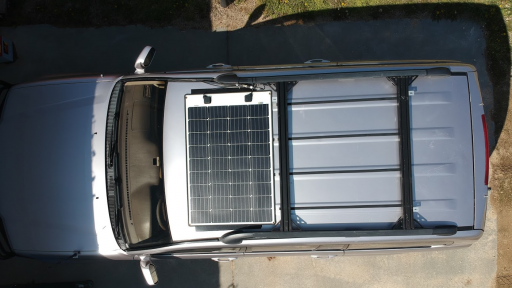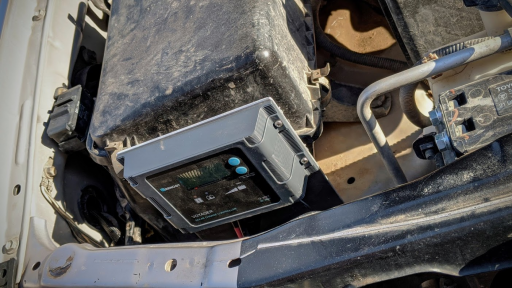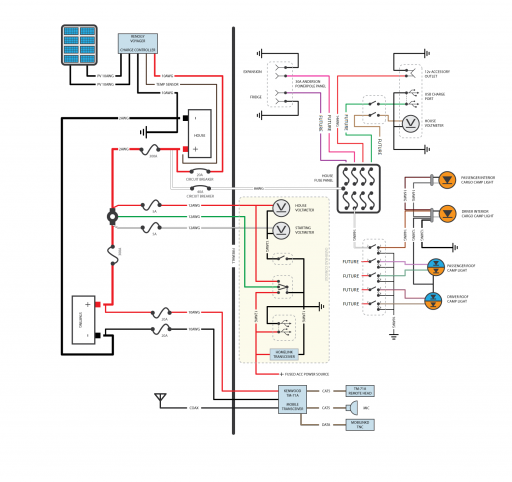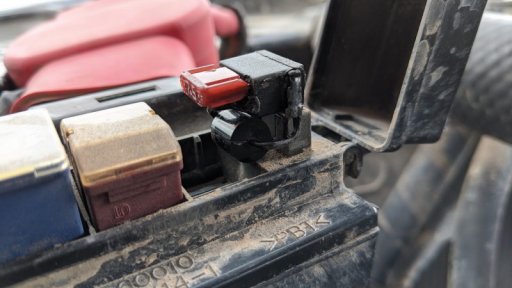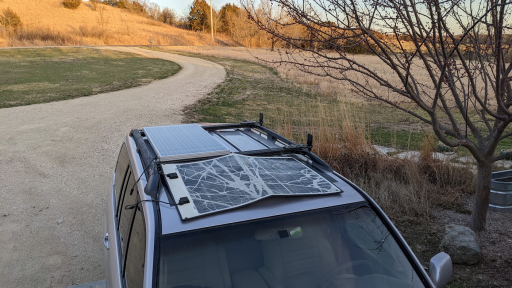
Traveler II
With the addition of a fridge to my Land Cruiser, I really wanted to isolate the power used by accessories when parked to a dedicated house battery. There are many possible routes to achieve a functional dual battery setup; this is how I did it.
Objective:
Install a simple and cost effective dual battery system
Goals:
System should operate automatically, manually or be switched off
Ability to self jump start
Keep it safe
I like to draw diagrams when doing electrical work, for home or vehicle. This helps keep me organized and greatly reduces the chance of me wiring in a short circuit or having and un-fused power source. Below is a basic diagram for this dual battery system.
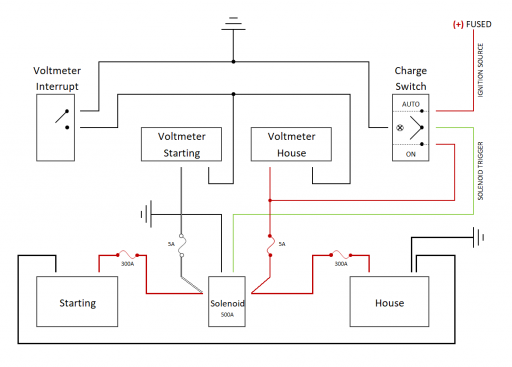
This works as follows:
Voltmeters - I can view the battery voltage anytime. With the solenoid deactivated the voltmeters will show the resting voltage of each battery. With the solenoid active the voltmeters will display the voltage of the batteries combined.
Charge/Solenoid control
- AUTO, the solenoid is activated when it receives power from an ignition power source. This setting automatically ties the batteries together when the vehicle is running and isolates them when it is off.
- ON, the solenoid is activated when it receives power from the house battery. This allows a self jump start incase the starting battery has died.
- OFF, the solenoid will not activate
The control center for the batteries is fitted to my overhead console. The primary switches replaced the useless sunroof controls in my Cruiser since the sunroof hasn't operated in years. The small digital voltmeters were cut into the console.
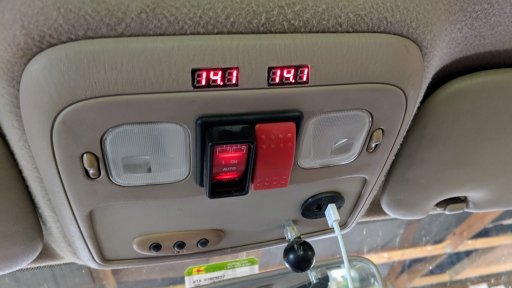
The 2nd battery tray I am using is an old style Slee Offroad tray, which is designed for an Optima battery. Since I was trying to keep costs down, I found an H5 (Group47) AGM battery that fit the tray. As a bonus the terminals are recessed into the battery case.
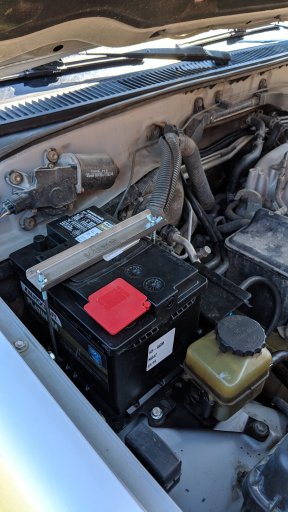
At both the starting battery and house battery I installed Bussman fuse holders and 300A MEGA/AMG fuses to protect the vehicle and batteries from a massive short circuit in the event a cable breaks. I used 2AWG welding wire, tinned copper lugs, braided loom and adhesive backed heat shrink to build the battery cables.
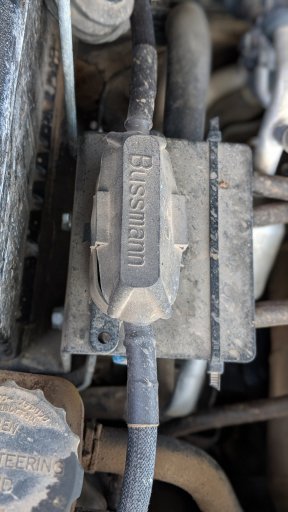
I tucked the solenoid against the firewall directly in front of the driver's seat. The solenoid engages with a solid audible 'click'. I made sure to cover all positive terminals in the whole system.
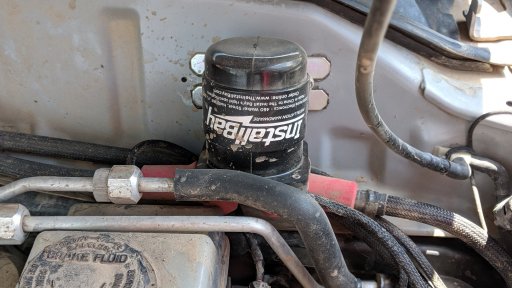
With the batteries charging, the solenoid functioning and having been lucky at preventing any wrench to ground arcs, I installed a small circuit breaker off the house battery. This little breaker supplies power to the rear of the vehicle, where all of the house accessories will be powered from.
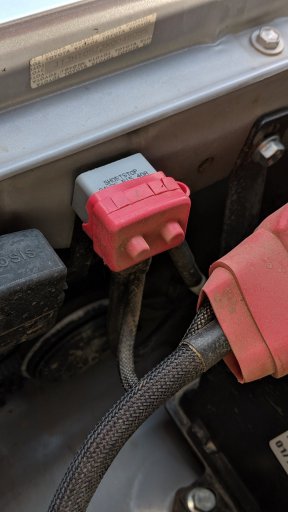
I utilized the factory subwoofer space to make a house accessory switch panel and power distribution system.
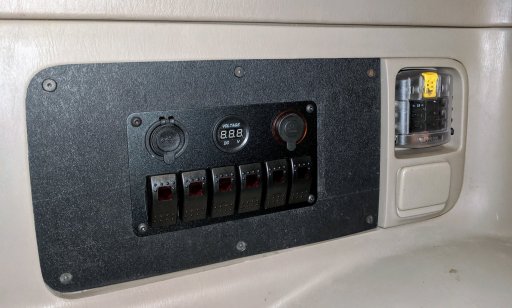
The Blue Seas fuse block is recessed into an old cupholder in the back of the Cruiser.
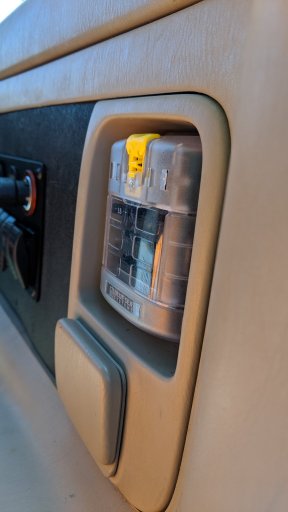
Objective:
Install a simple and cost effective dual battery system
Goals:
System should operate automatically, manually or be switched off
Ability to self jump start
Keep it safe
I like to draw diagrams when doing electrical work, for home or vehicle. This helps keep me organized and greatly reduces the chance of me wiring in a short circuit or having and un-fused power source. Below is a basic diagram for this dual battery system.

This works as follows:
Voltmeters - I can view the battery voltage anytime. With the solenoid deactivated the voltmeters will show the resting voltage of each battery. With the solenoid active the voltmeters will display the voltage of the batteries combined.
Charge/Solenoid control
- AUTO, the solenoid is activated when it receives power from an ignition power source. This setting automatically ties the batteries together when the vehicle is running and isolates them when it is off.
- ON, the solenoid is activated when it receives power from the house battery. This allows a self jump start incase the starting battery has died.
- OFF, the solenoid will not activate
The control center for the batteries is fitted to my overhead console. The primary switches replaced the useless sunroof controls in my Cruiser since the sunroof hasn't operated in years. The small digital voltmeters were cut into the console.

The 2nd battery tray I am using is an old style Slee Offroad tray, which is designed for an Optima battery. Since I was trying to keep costs down, I found an H5 (Group47) AGM battery that fit the tray. As a bonus the terminals are recessed into the battery case.

At both the starting battery and house battery I installed Bussman fuse holders and 300A MEGA/AMG fuses to protect the vehicle and batteries from a massive short circuit in the event a cable breaks. I used 2AWG welding wire, tinned copper lugs, braided loom and adhesive backed heat shrink to build the battery cables.

I tucked the solenoid against the firewall directly in front of the driver's seat. The solenoid engages with a solid audible 'click'. I made sure to cover all positive terminals in the whole system.

With the batteries charging, the solenoid functioning and having been lucky at preventing any wrench to ground arcs, I installed a small circuit breaker off the house battery. This little breaker supplies power to the rear of the vehicle, where all of the house accessories will be powered from.

I utilized the factory subwoofer space to make a house accessory switch panel and power distribution system.

The Blue Seas fuse block is recessed into an old cupholder in the back of the Cruiser.

Last edited:



